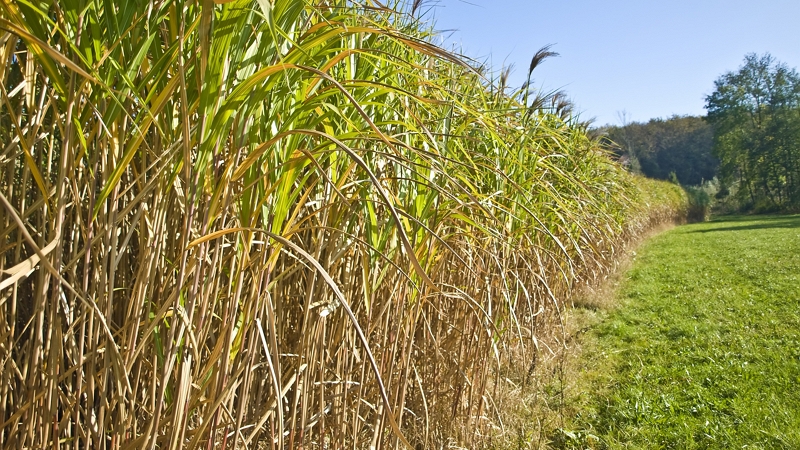Analysis of Hydrogen
We determine the hydrogen content according to the procedures outlined in European Standard EN 15104:2011 ("Solid biofuels - Determination of total content of carbon, hydrogen and nitrogen - Instrumental methods") and we use an Elementar Vario MACRO Cube elemental analyser which has been designed to satisfy the requirements of this method.
We report the hydrogen content on a dry-mass basis as well as on an as-received basis and a dry ash-free basis (providing that the ash content and as-received moisture content of the sample have also been determined). We use the calculations outlined in European Standard EN 15296:2011 ("Solid biofuels - Conversion of analytical results from one basis to another") to carry out these conversions. Our figure for the hydrogen content of the sample on an as-received basis only considers the hydrogen present in the biomass and not that present in the water.
Click here to place an order for determining Hydrogen.
Request a QuoteHydrogen Content
Analysis Packages for Hydrogen
Volatile Matter, Fixed Carbon, Moisture, Ash, Carbon, Hydrogen, Nitrogen, Sulphur, Oxygen, Gross Calorific Value, Net Calorific Value, Chlorine, Ash Shrinkage Starting Temperature (Reducing), Ash Deformation Temperature (Reducing), Ash Hemisphere Temperature (Reducing), Ash Flow Temperature (Reducing), Aluminium, Calcium, Iron, Magnesium, Phosphorus, Potassium, Silicon, Sodium, Titanium
Moisture, Ash Content (815C), Carbon, Hydrogen, Nitrogen, Sulphur, Oxygen, Chlorine, Volatile Matter, Fixed Carbon, Aluminium, Calcium, Iron, Magnesium, Phosphorus, Potassium, Silicon, Sodium, Titanium, Gross Calorific Value, Net Calorific Value, Ash Shrinkage Starting Temperature (Reducing), Ash Deformation Temperature (Reducing), Ash Hemisphere Temperature (Reducing), Ash Flow Temperature (Reducing)
Thernogram - Under Nitrogen, Thermogram - Under Air, Moisture, Inherent Moisture, Ash Content (815C), Carbon, Hydrogen, Nitrogen, Sulphur, Oxygen, Organic Carbon, Inorganic Carbon, Chlorine, Volatile Matter, Fixed Carbon, Aluminium, Calcium, Iron, Magnesium, Phosphorus, Potassium, Silicon, Sodium, Titanium, Gross Calorific Value, Net Calorific Value, Ash Shrinkage Starting Temperature (Reducing), Ash Deformation Temperature (Reducing), Ash Hemisphere Temperature (Reducing), Ash Flow Temperature (Reducing)
Thernogram - Under Nitrogen, Thermogram - Under Air, Moisture, Inherent Moisture, Ash Content (815C), Carbon, Hydrogen, Nitrogen, Sulphur, Oxygen, Organic Carbon, Inorganic Carbon, Chlorine, Volatile Matter, Fixed Carbon, Specific Surface Area (Nitrogen Gas Adsorption), Calcium, Iron, Magnesium, Phosphorus, Potassium, Silicon, Sodium, Titanium, Gross Calorific Value, Net Calorific Value, Ash Shrinkage Starting Temperature (Reducing), Ash Deformation Temperature (Reducing), Ash Hemisphere Temperature (Reducing), Ash Flow Temperature (Reducing)
Analytical Procedure for Hydrogen
☑ Step 1: Elemental Analysis of the Sample
Equipment Used for Hydrogen Analysis

Elemental Analyser
A Vario MACRO cube elemental analyser is used for the quantification of the Carbon, Hydrogen, Nitrogen, and Sulphur content of samples.
The processing of lignocellulosic materials in modern biorefineries will allow for the
production of transport fuels and platform chemicals that could replace petroleum-derived
products. However, there is a critical lack of relevant detailed compositional information
regarding feedstocks relevant to Ireland and Irish conditions. This research has involved the
collection, preparation, and the analysis, with a high level of precision and accuracy, of a
large number of biomass samples from the waste and agricultural sectors. Not all of the
waste materials analysed are considered suitable for biorefining; for example the total sugar
contents of spent mushroom composts are too low. However, the waste paper/cardboard
that is currently exported from Ireland has a chemical composition that could result in high
biorefinery yields and so could make a significant contribution to Ireland’s biofuel demands. | ||
Additional Material
We can determine the Hydrogen content of pyrolysis bio-oils, click here to learn more about our various methods for analysing bio-oil.
We can determine the Hydrogen content of seaweed, click here to learn more about our various methods for analysing seaweed.





